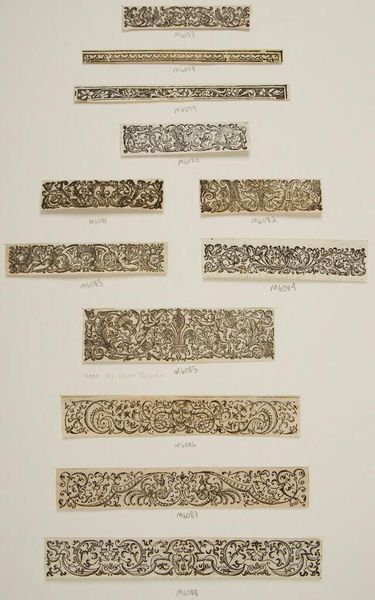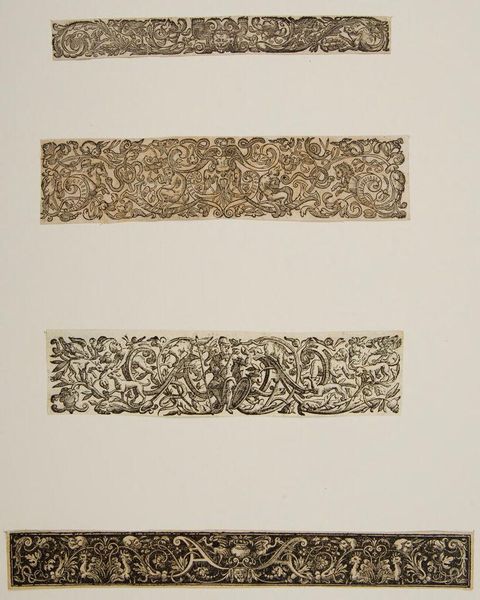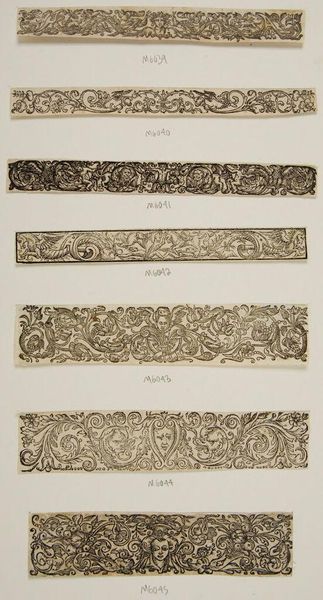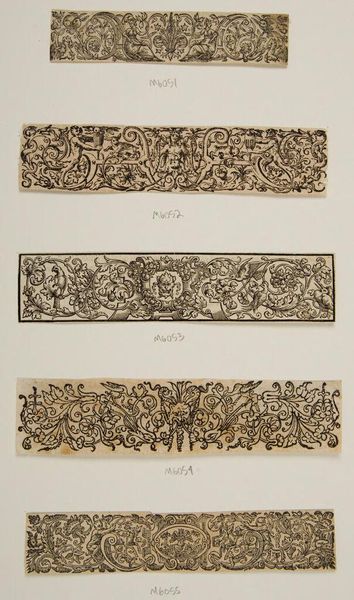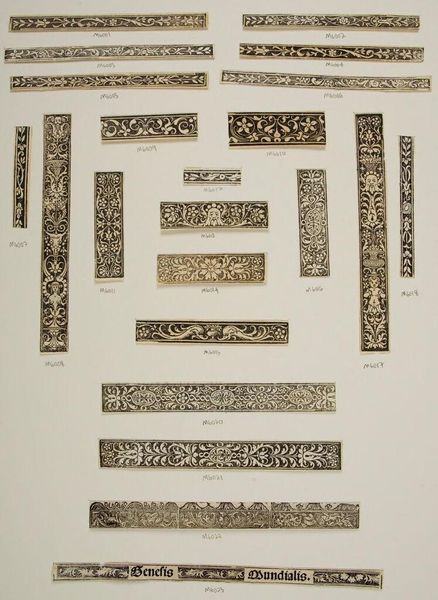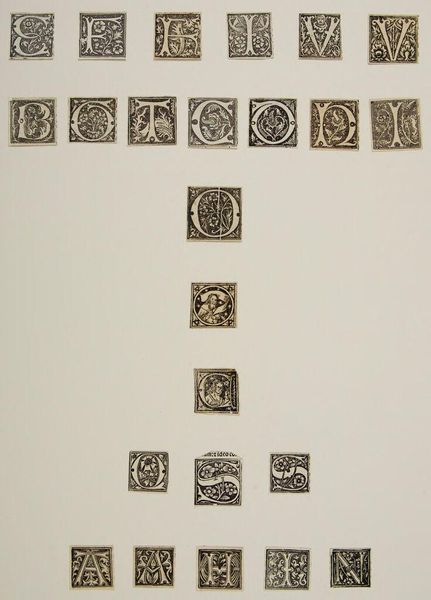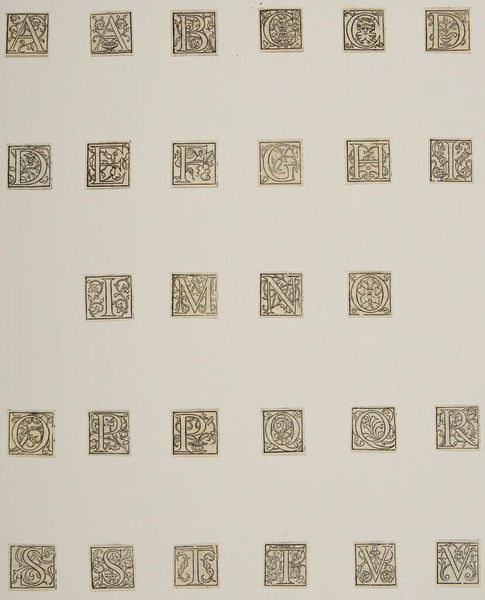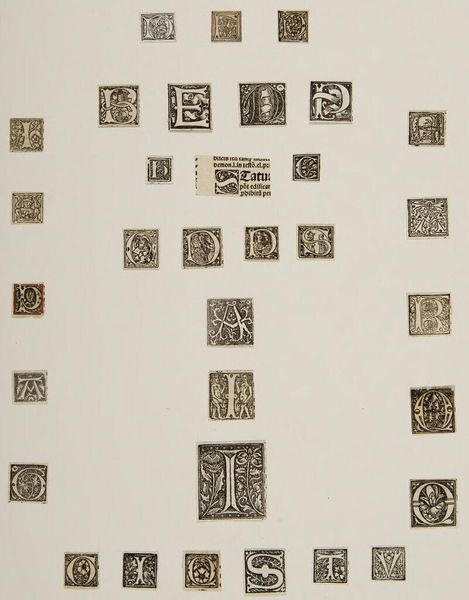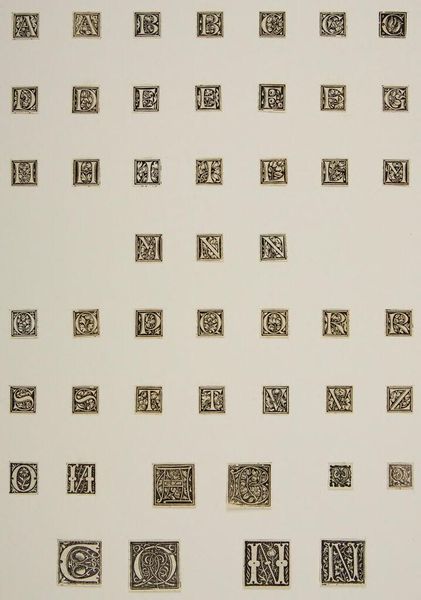
Copyright: CC0 1.0
Curator: This artwork, titled "Border," is by an anonymous artist and can be found in the Harvard Art Museums. Editor: There’s a rhythmic quality to these strips, a repetition of form and pattern that feels almost like textile samples. I’m immediately thinking of the labor and skill involved in producing these intricate designs. Curator: Observe the delicate interplay of positive and negative space, the recurring motifs of foliage and figures. It speaks to a deeper structural harmony. The artist seems to be exploring variations on a theme. Editor: Absolutely, and each variation represents time, effort, and materials. What purpose did they serve? Were they prototypes for larger works? How does their materiality impact their meaning? Curator: Perhaps these strips were intended to be purely decorative, a meditation on form. Editor: Or perhaps, like many crafts, they served a practical purpose. Thinking about how the physical labor of crafting is often overlooked in art history, this piece prompts me to consider the socio-economic context in which the strips were made. Curator: I appreciate your insight, but the power of these borders lies in their formal elegance. Editor: Agreed, the formal qualities are striking, but grounding our analysis in material reality enriches our understanding.
Comments
No comments
Be the first to comment and join the conversation on the ultimate creative platform.
